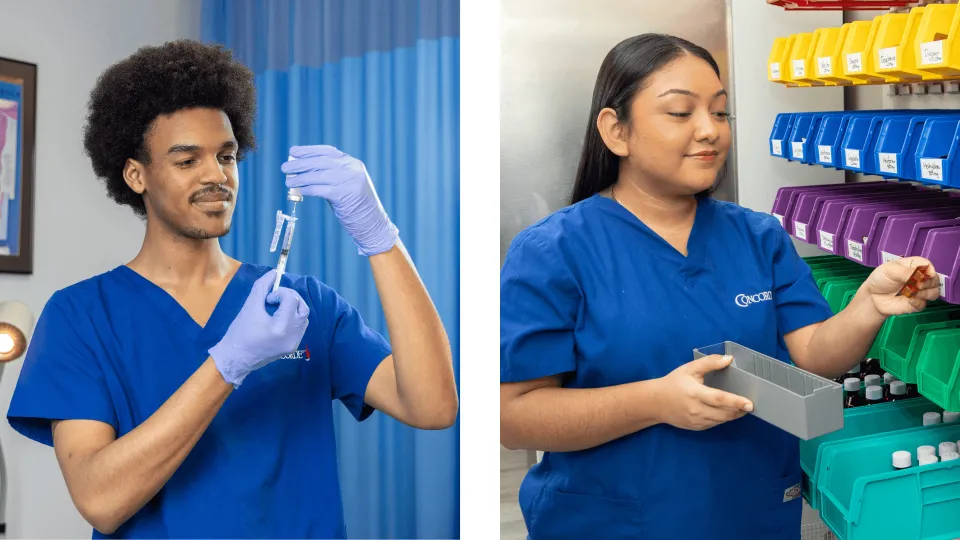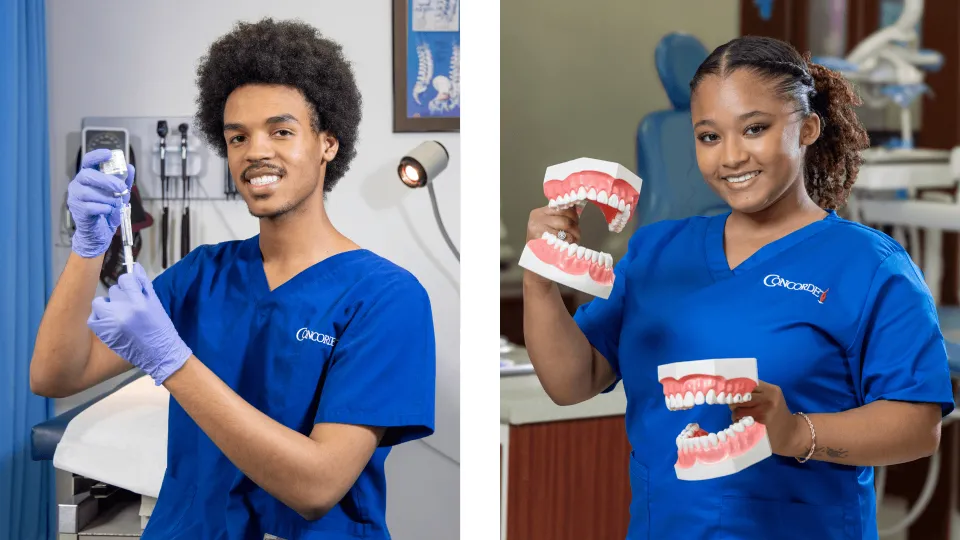
Advances in technology allow people to have easier access to healthcare, and one way this is possible is through telehealth. Also known as telemedicine, telehealth allows patients to see a medical professional remotely via an electronic device such as a smartphone or computer. A medical assistant is part of the patient-centered medical team consisting of nurses, physicians, and other health care professionals who work in health care. Thanks to these technological advances, they can perform their job in a traditional office or telehealth setting. It's important to know what to expect in either setting.
What Does a Medical Assistant Do?
Medical assistants are important members of the patient care team since providers cannot meet all the needs of a patient alone. When it comes to interacting with these patients, medical assistants provide administrative and clinical duties to the doctors. They improve workflow, increase patient satisfaction, and reduce burnout experienced by physicians. The assistant usually works under the license of a supervising physician. Every state is different, so it's important to check with your state's board of medicine to determine what your scope is.
The administrative duties of a medical assistant vary, depending upon the type of office. Some of the tasks may include the following:
- Answer the telephone.
- Schedule appointments.
- File medical charts.
- Process medical billing.
- Keep financial records.
- Call prescriptions into a pharmacy.
Before a patient sees a physician in an exam room, they usually meet with a medical assistant. The assistant greets the patient, takes down the vitals, and reviews the reason for the appointment. The vitals they note include the patient's height, weight, blood pressure, and temperature. In certain instances, the assistant has the authority to review the patient's medication list and jot down any other important updates, such as a change in medical, social, and family history. The assistant's role is to keep the patient at ease, identifying all the issues they have, and create a foundation of trust.
It's important to know that medical assistants cannot perform certain tasks. According to the American Academy of Family Physicians, medical assistants cannot make medical assessments, prescribe or renew medications, or give any type of medical advice, even when asked (1). If a patient asks the assistant for medical advice, the patient should be directed to ask the physician.
Learn more about medical assistant duties.
What's the Difference Between a Physician's Assistant and a Medical Assistant?
You might think these two jobs are interchangeable, but that's not the case. Other than the fact that they both work in the health care field, there isn't much common ground between the two. A medical assistant is one of the most versatile health professional jobs, as they are cross-trained to perform administrative and clinical responsibilities.
On the other hand, a physician's assistant requires more education and can diagnose and treat patients and order medical tests. They are licensed health care professionals who work directly under the supervision of a physician, oftentimes serving as the principal health care provider in rural or inner-city clinics. They also work closely with doctors and perform similar duties.
How Does the Medical Assistant Role Change in Telehealth?
Patients all across the country have come to expect the highest in care from their healthcare providers. This remains the same whether they're seen in-person or virtually. The role of the medical assistant remains relatively unchanged in regard to a telehealth visit. Although they no longer physically escort a patient into an exam room, they can still take vitals remotely. The medical assistant should also make sure the patient knows what to expect during a telehealth visit and how it might differ from an in-person exam.
In certain instances, the medical assistant might need to obtain remote monitoring devices in advance of the virtual assessment. These devices include blood pressure cuffs and glucose monitors. The patient would receive this device with the data transmitted directly to the medical professional and then discuss the results at the telehealth visit.
What Are the Benefits of Telehealth?
With the increase of telehealth visits thanks to improved technology, it's important to note the numerous benefits associated with them. Some of these advantages include the following:
Convenience and comfort
Perhaps the most important benefit of telemedicine is that the patient isn't waiting to be seen for their appointment. They don't have to drive to a physician's office and sit in the waiting room, especially when they're not feeling well. The patient can simply connect with their physician remotely and share their symptoms while they're comfortable at home. The patient might not even need to take time off work or schedule childcare.
Control of potential illness
To help prevent the spread of the illness, physicians can use telehealth visits to prescreen patients for possible infectious diseases. They also avoid heading into the office, exposing fewer people to germs. This comes in handy especially if the office has pregnant, elderly, chronically ill, or immunocompromised patients.
Better assessment
When physicians and medical assistants view the patient's home environment, they can identify certain clues in their surroundings that might cause allergies. Physical and occupational therapists can also observe the patient at home and determine their ability to navigate or care for themselves at home. Telehealth is also an ideal way to conduct mental health assessments and counseling sessions.
Family assistance
When consulting with a medical professional, the patient might want family members present to discuss the lab results or what the next steps might be. Telehealth visits allow family members who live out of town or even across the country to hop onto the call as long as the patient authorizes it.
Access to specialists
Perhaps the patient needs to consult with a specialist who doesn't practice medicine in the area. In that instance, a telehealth visit would be ideal as the patient wouldn't need to travel at all to receive a consultation.
The advantages of telehealth are not limited to patients and physicians, as medical assistants can also benefit. They can achieve improved efficiency in their jobs, reduce their exposure to communicable diseases, and keep their patient more content due to a reduction in wait times. They can also do their job from practically anywhere.
What Telehealth Technologies Are Available?
Both providers and patients can use telehealth technologies to connect to each other better. Some of these technologies include the following:
Live video
Also referred to as "real-time," live video is a two-way interaction between a patient and healthcare provider by using audiovisual telecommunications. It's close to getting an in-person encounter when one is not available due to location or limitations due to poor health. Patients can use this technology for consultative and diagnostic services.
Mobile health
This type of technology, also called mHealth, includes public health practice and education supported by mobile communications. This includes cell phones, tablets, and laptops. Patients can receive a variety of information ranging from healthy lifestyle text messages to specific disease outbreaks.
Remote patient monitoring (RPM)
With this technology, a patient can remain at home without having to physically travel to a physician's office. The patient's health and medical data are collected via electronic communication technologies and then transmitted to a provider in another location. This technology is beneficial if a patient is released to home care or another facility, allowing the provider to continue to track the data.
Store-and-forward telemedicine
This technology involves the transmission of medical data to a physician for assessment. Some of the types of transmission that can be sent are X-rays, pre-recorded videos, or photos. The physician uses this information to evaluate the case without the use of a live interaction. Specialty physicians, such as dermatologists and radiologists, benefit from this option.
What's the Future of Telehealth?
One innovation that saw an increase in usage during the COVID-19 pandemic involved telehealth. According to the U.S. Department of Health and Human Services, from February to April 2020, telehealth visits increased from 1% of primary care visits to almost 43.5% (2). With the advances in technology and the rapid acceptance by patients and providers, telehealth has the potential to change how health care systems operate.
Patients might also begin to select their health care providers based on their telemedicine access. When patients can have their visit from the comfort of home, they no longer worry about long wait times. Access to specialists could also increase, necessitating the need for more assistants.
What Is the Demand for a Medical Assistant?
When the Affordable Care Act (ACA) was enacted in 2014, it extended health care coverage for more than 8 million people who didn't have insurance coverage previously (3). This coverage allowed more people to afford a visit with their doctor, causing an increase in office and hospital outpatient visits. The ACA also increased the amount of paperwork health care providers must submit, thus increasing the need for trained medical assistants to help.
According to the U.S. Bureau of Labor and Statistics, the job of a medical assistant is one of the country's careers that is growing much faster than average (4). From 2019 through 2029, employment is projected to increase by 19%. This growth is due to the aging baby boomer population increasing as well as growing demand for preventive medical services.
The World Health Organization (WHO) states that the number of people aged 65 or older is expected to grow from an estimated 524 million in 2010 to nearly triple at 1.5 billion in 2050 (5). This increase represents an increase from 8% of the world's population in 2010 to about 16% of the world's population. With fewer children entering the population and people living longer, older people are making up more of the population.
In some countries, the number of people entering into older ages might challenge the national infrastructure, particularly those in the health care system. Those working in health care might see an influx of patients needing consistent and increasing medical care. As a result, more physicians will need assistance to perform administrative and clinical duties, thus allowing physicians to visit with more patients.
How Do You Become a Medical Assistant?
Whether you decide to work in telehealth or a traditional physician's office, the path to becoming a medical assistant is the same.
Education
Although there are no formal education requirements to becoming a medical assistant, some employers prefer to hire assistants who have completed a medical assistant educational program. Typically, these programs can take nine months to a year to complete, depending upon the school and type of program. The real-world courses cover the practical aspect of a medical work environment and include first aid and CPR, patient intake processing, and infection control.
Experience Requirements
While taking the coursework, you will probably need to complete a specific number of hours before you can obtain your certification. Many programs can connect you with the ideal hands-on medical assistant externship opportunity.
Licensing and Certification
Once you complete your coursework, you can opt to take an MA certification exam. Although this is not required, some employers prefer to hire medical assistants who have certification, as this gives them greater assurance. The American Association of Medical Assistants (AAMA) and the American Medical Technologists (AMT) administer certification exams.
The AAMA awards the Certified Medical Assistant (CMA) credential, which you need to recertify every five years. You can do so through continuing education courses or taking the examination again. The AMT awards the Registered Medical Assistant (RMA), and renewal of this occurs via yearly dues.
What Can Concorde Do for You?
If you're interested in pursuing a medical assistant career, Concorde can help you with your training. Our medical assistant programs can be completed in as little as eight months, and you will receive the training and guidance needed to prepare you for your career. We have programs that begin each month, so you can get started whenever it's convenient for you.
Interested In How To Become a Medical Assistant?
Click here to explore Medical Assistant programs near you!
Footnotes:
"What a Medical Assistant Can Do for Your Practice," American Academy of Family Physicians, https://www.aafp.org/fpm/2005/0400/p51.html.
"HHS Issues New Report Highlighting Dramatic Trends in Medicare Beneficiary Telehealth Utilization Amid COVID-19," U.S. Department of Health and Human Services, https://www.hhs.gov/about/news/2020/07/28/hhs-issues-new-report-highlighting-dramatic-trends-in-medicare-beneficiary-telehealth-utilization-amid-covid-19.html.
"Fact Sheet: Affordable Care Act by the Numbers," The White House President Barack Obama, https://obamawhitehouse.archives.gov/the-press-office/2014/04/17/fact-sheet-affordable-care-act-numbers.
"Medical Assistants," U.S. Bureau of Labor Statistics, https://www.bls.gov/ooh/healthcare/medical-assistants.htm.
"Global Health and Aging," World Health Organization, https://www.who.int/ageing/publications/global_health.pdf.
Take The Next Step Towards a Brighter Future
Interested in learning more about our Medical Assistant program?
We have a Concorde representative ready to talk about what matters most to you. Get answers about start dates, curriculum, financial aid, scholarships and more!







